The last pair of skis was loaded into the luggage compartment, and the door was tightly secured for take-off. Ground crew members conducted the final safety check and gave a thumbs-up to the pilot - we were good to go. As our pilot, introduced to us as Krash, revved up the helicopter, the sound of the blades morphed from a rhythmic “whomp-whomp-whomp” to a turbo high-speed “wrrr-wrrr-wrrr.” The chopper lifted into the air, and the turbulence from the spinning rotor blades caused a maelstrom of wind swirling around the Mount Shark Helipad, located 175 km (108 miles) west of Calgary in the Canadian Rockies.
Krash spun the helicopter around 180°, veered to the west, and followed the same route as the Bryant Creek Hiking Trail along the Alberta side of the Continental Divide. The 6,000-mile (9,656 km) Divide runs from the Bering Strait in the north to the Strait of Magellan in the south, marking the hydrological point where the continental waterways separate and drain into different oceans. In the Canadian Rockies, water west of the Continental Divide drains into the Pacific Ocean, while water east of the Divide drains into the Arctic Ocean through the Hudson Bay.
Having had previous experiences with Hubs on his winter backcountry escapades, I was leery about what I was getting myself into. Hubs’ idea of winter fun was cross-country skiing into a remote place in the Canadian Rockies, pitching a tent in the snow, and toughing it out like he was a native-born Inuit. My memory was still fresh from another time he convinced me I would have the time of my life if I joined him!
He wasn’t far off the mark - I did have an experience I will never forget. As I lay freezing in my sub-Arctic sleeping bag, listening to the avalanches thundering down the nearby mountainsides, the thermometer plunged to -25°F. Pardon the pun, but it has never been more aptly stated - I was NOT a happy camper! My wise husband, a pro-experienced winter camper, advised me to follow his example and put my woolen long underwear on my head to help trap more heat in my body. It was a LONG night, and I have NEVER found occasion to put long underwear on my head again, maybe because I have NEVER been camping again.
This time, Hubs assured me a modern lodge with electricity and hot running water awaited me at the other end of the helicopter flight. I was skeptical, as I still grappled with nightmares about being smothered by a pair of renegade longjohns perched on my head.
Krash flew the chopper 20 kilometers along the Bryant Creek Trail, then he banked to the left, edging west and closer to the mountain. This got my attention because the ‘copter was headed straight for a rock wall with a “bite” out of it.
Surely, he’s NOT going through THAT space!
I held my breath as Krash skillfully maneuvered into the Assiniboine Pass without missing a beat! This also marked the Continental Divide and the boundary between the western Canadian provinces of Alberta and British Columbia. At the ground level, 9,000 feet below our helicopter, the Bryant Creek Trail ended and turned west to connect with the Assiniboine Pass Trail.
Mt. Assiniboine came into view, and minutes later, Krash touched the bird down on the winter-packed helipad at Mt. Assiniboine Lodge. The flurries of snow that were frantically whirling around the helipad gradually came to a standstill as the rotor blades stopped. The ground crew opened the chopper door and gave us the “go-ahead” to disembark. The scenery was stunning.
It was easy to see why Assiniboine is known as the Matterhorn of the Canadian Rockies. Here is the Swiss Matterhorn.
Both mountains are recognized as iconic in their respective ranges, although the Matterhorn is by far the more famous of the two. Due to its remote location, Mt. Assiniboine receives several thousand visitors annually, while the Matterhorn attracts three million people who collectively take an estimated 100 million photos.
In 1928, an Italian nobleman, Marquis Albizzi, and a Norwegian ski instructor, Erling Strom, combined their resources and built Mt. Assiniboine Lodge, the first backcountry ski lodge in North America. Although the nearest road was 26 kilometers, the lodge initially was a place where visitors of financial means went to relax and enjoy the natural setting. Over the years, amenities were added to the main lodge, and additional guest cabins were built. Renovations and structural stabilization of the Lodge were completed by the British Columbia Parks Department in 2011. Modern visitors to Mt. Assiniboine Lodge enjoy the same hiking and skiing trails that were used in 1928, and the Lodge maintains its historic charisma.
Note the snow - the very DEEP snow. Note the PATH through the snow - the very NARROW path. I made the mistake of stepping off the path…
WHOOSH!!!
I was devoured by nine feet of snow, and I could not get up! It was like trying to stand up in a body of water with no bottom and no buoyancy. I floundered and flopped in the snow, inching farther away from the path and heaping more piles of the white stuff on myself.
Was it my grumbling like an unhappy grizzly she-bear that caught Hubs’ attention? Or did he finally notice his wife was on her belly, burrowing and plowing like a horizontal snow gopher across the expanse of snow in front of the lodge?
Looking confused, he asked me, “What are you doing?”
Really? Was my predicament not obvious? “Seeing if I can swim in snow.”
“That won’t work.” He informed me, either ignoring or missing the gist of my sassy response to his inquiry. He grabbed a ski pole and extended it out to me. I took hold of the pole, got some traction, and pulled myself back onto the path.
We received the keys to our cabin so we could drop off our gear before returning to the Main Lodge for our mandatory lessons on avalanche safety.
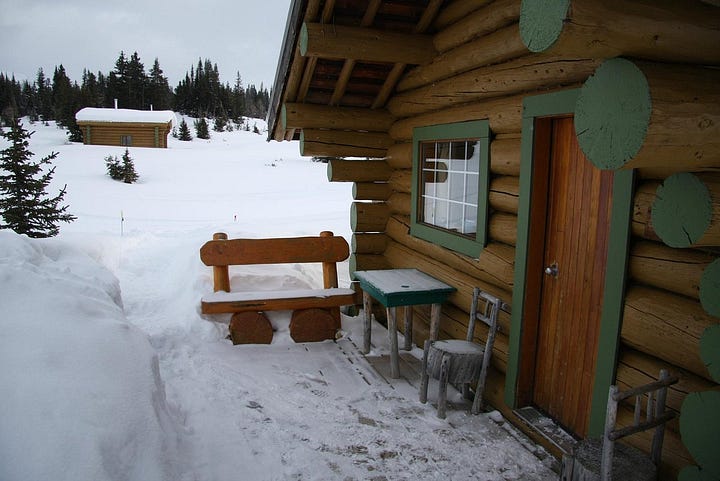

Hold on! I didn’t see any running water or electrical outlets! What was the Deal?
According to Hubs, this wasn’t a problem because the Main Lodge had running water and electricity. It didn’t matter that we weren’t staying in the lodge. Did the man plan on telling me to put my longjohns on my head again because I didn’t see any source of heat in our rustic log cabin?
We did, however, have our own private “facility” - an outhouse located down a short path behind the cabin. It had potential. If nature called in the night, I could grope about in the dark, go outside in the sub-zero weather, step off the path, and practice my swimming snow gopher and snow-wallowing routines again. My mind was made up: I would NOT be making any nocturnal trips to the biffy.
Twenty people gathered at the Main Lodge, where we were each given Avalanche Emergency Transmitters and trained on how to use them. The training was mandatory for anyone wanting to leave the lodge and ski in Mt. Assiniboine Provincial Park. The purpose of the transmitter is to help rescue teams locate avalanche victims.
On average, 11-14 people are killed by avalanches every year in Canada, mostly in British Columbia and Alberta. It is said that the most important piece of avalanche prevention gear anyone will ever take into the backcountry is their brain. In the event of an avalanche, every minute that passes makes a critical difference to the victim's survival, although the outcome is not very promising.
The next morning, we were geared up and ready to hit the trails. One of the biggest challenges of cross-country skiing is dressing for the changes in temperature throughout the day. It is a sport where layering of clothing is essential, along with a good backpack to carry all the gear needed for the entire day. At Assiniboine, the temperature in the wintertime can range from -30°C to 10°C (-22.0°F to 50.0°F) on the same day. Considering the sport, by its nature, can take you miles from your base, good planning and preparation are imperative for safety and comfort. Hubs is a good person to ski with because he describes himself as a “Good Boy Scout - Always Prepared.” I admit I have been known to pack my backpack lighter, relying on him to have all the bases covered for both of us. It’s the least he can do given that he’s not upright about the basic amenities of our accomodation - luxuries like electricity, heat, and water.
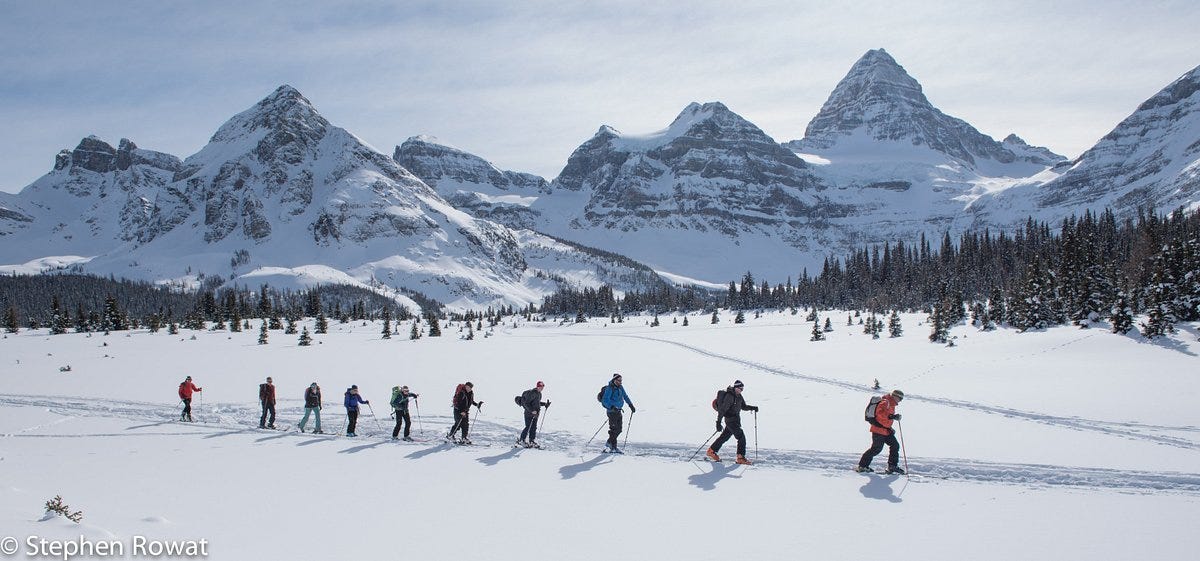
After a full day of skiing, we returned to the main lodge - the one with electricity and running water - and enjoyed a fantastic meal with our fellow skiers. A great day was had by all.
The next morning, Krash arrived in his helicopter to transport us back to Mount Shark. The chopper lifted off the helipad, and Krash turned it due west to Mt. Assiniboine. He circled the mighty Matterhorn of the Canadian Rockies and then retraced the flight path that originally brought us to Mt. Assiniboine Lodge.
If you enjoyed this article, let me know. Tap that heart icon below. L


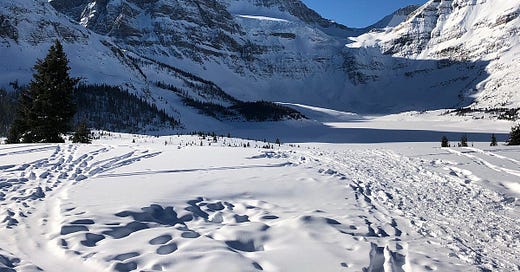






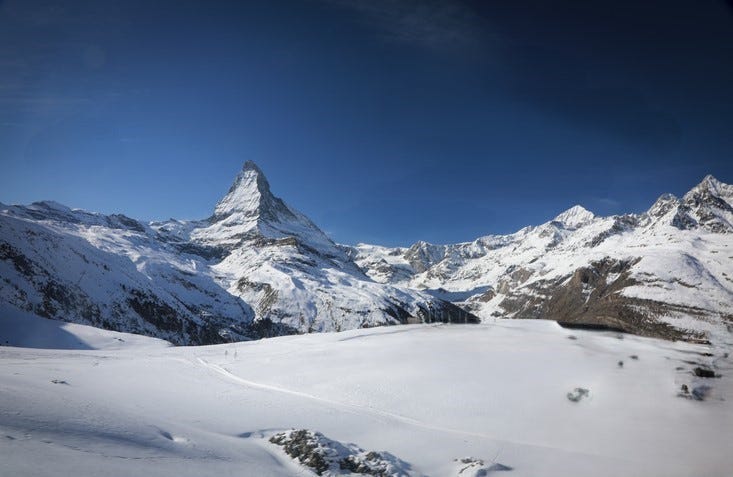
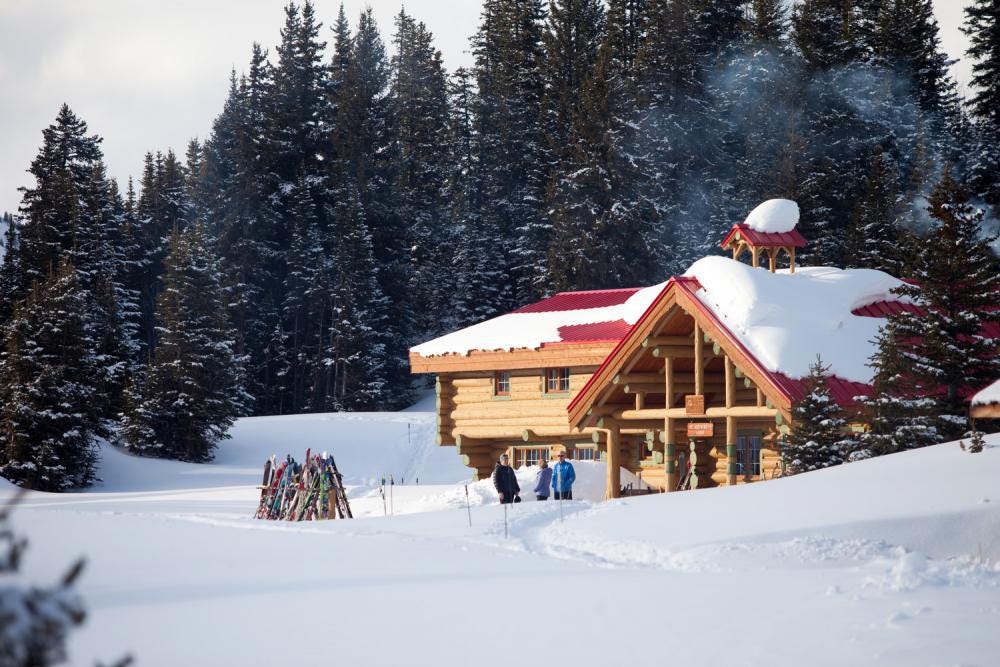
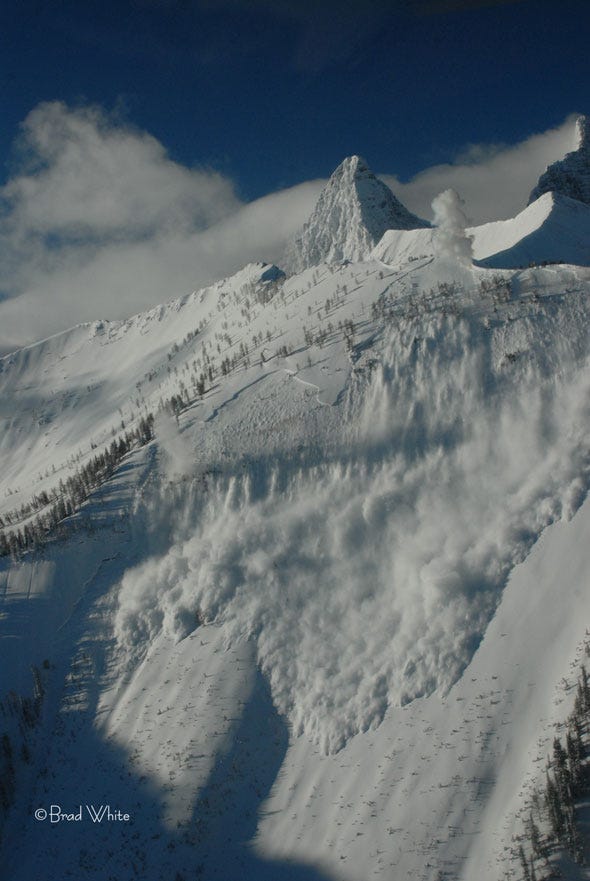


What an adventure! Thanks for taking us on this trip.
Riding with a pilot named “Krash” is like eating a meal made by a chef named “Burns.”